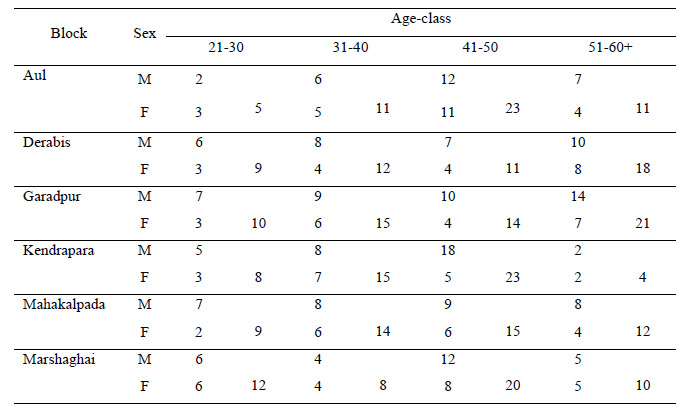Diversity of Some Threatened Indigenous Rice Varieties Cultivated in Odisha, India
Main Article Content
Abstract
Traditional crop landraces play dynamic roles in the expression of native biological and cultural diversity via their central position in the genetic resource base, agro ecosystems and social heritage of indigenous peoples. This paper describes the diversity and distribution of traditional rice varieties cultivated in the interior localities of Kendrapara district, Odisha, India. A total of 69 varieties of paddy befitting the agro-climatic conditions of the place have been identified. The majority of them are disease and pest resistant varieties suitable for lowland cultivation. In addition, they are also resistant to water logging and flooding. These traditional varieties are being gradually replaced by the incorporation of modern rice cultivars in landrace cultivation areas, thereby threatening the existence of many invaluable traits present in such local varieties. A large number of landraces of paddy have disappeared from the irrigated fields since the adoption of high yielding varieties (HYVs). Conservation of the existing indigenous
traditional varieties can play an important role in the development of sustainable agriculture and also valuable to the local farmers for agronomic, social and cultural reasons. The current research will hopefully help to improve, monitoring and management of traditional rice varieties and highlight their importance in maintaining agro ecosystem services.
Article Details
Published articles are under the copyright of the Environment and Natural Resources Journal effective when the article is accepted for publication thus granting Environment and Natural Resources Journal all rights for the work so that both parties may be protected from the consequences of unauthorized use. Partially or totally publication of an article elsewhere is possible only after the consent from the editors.

